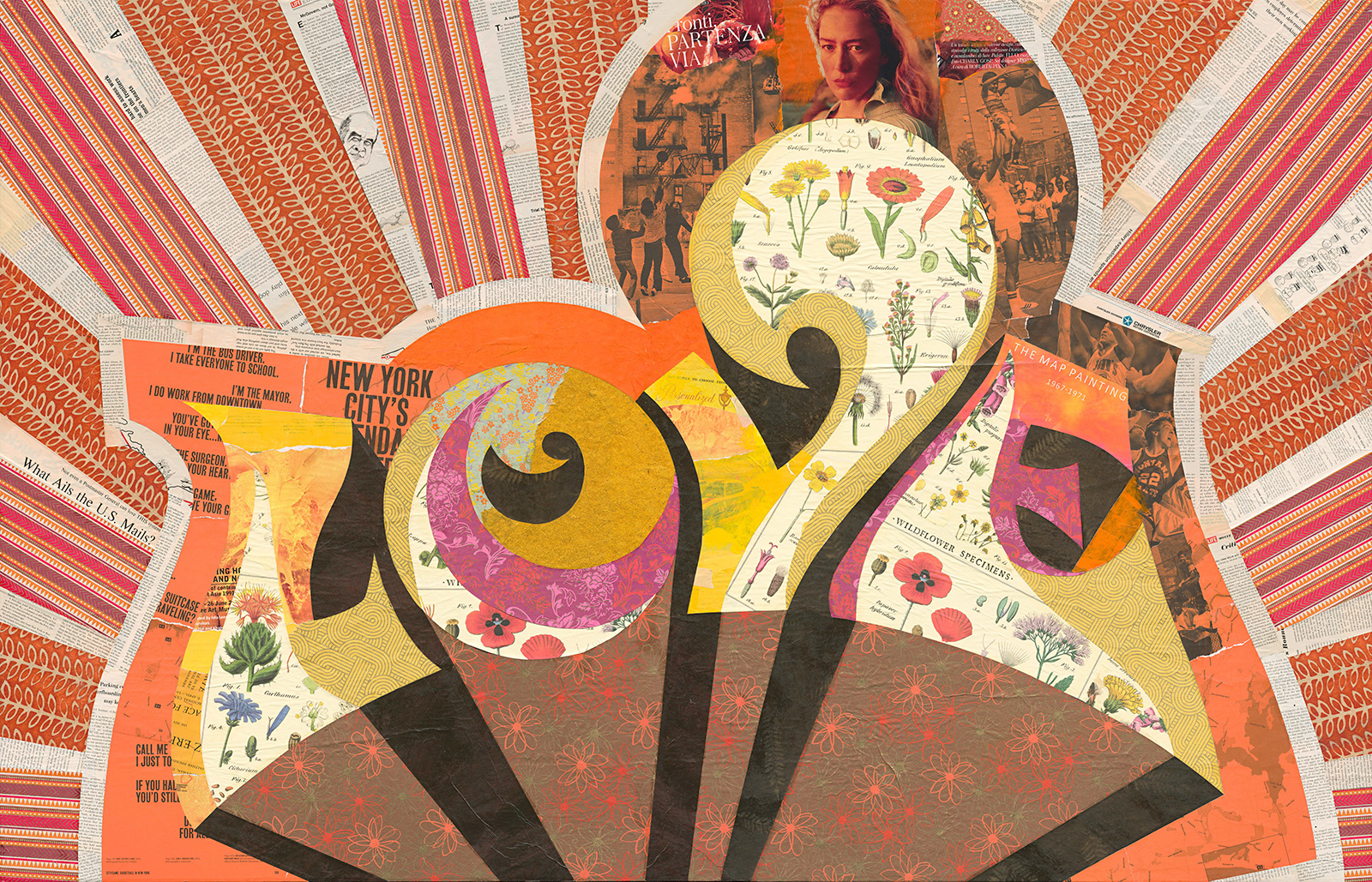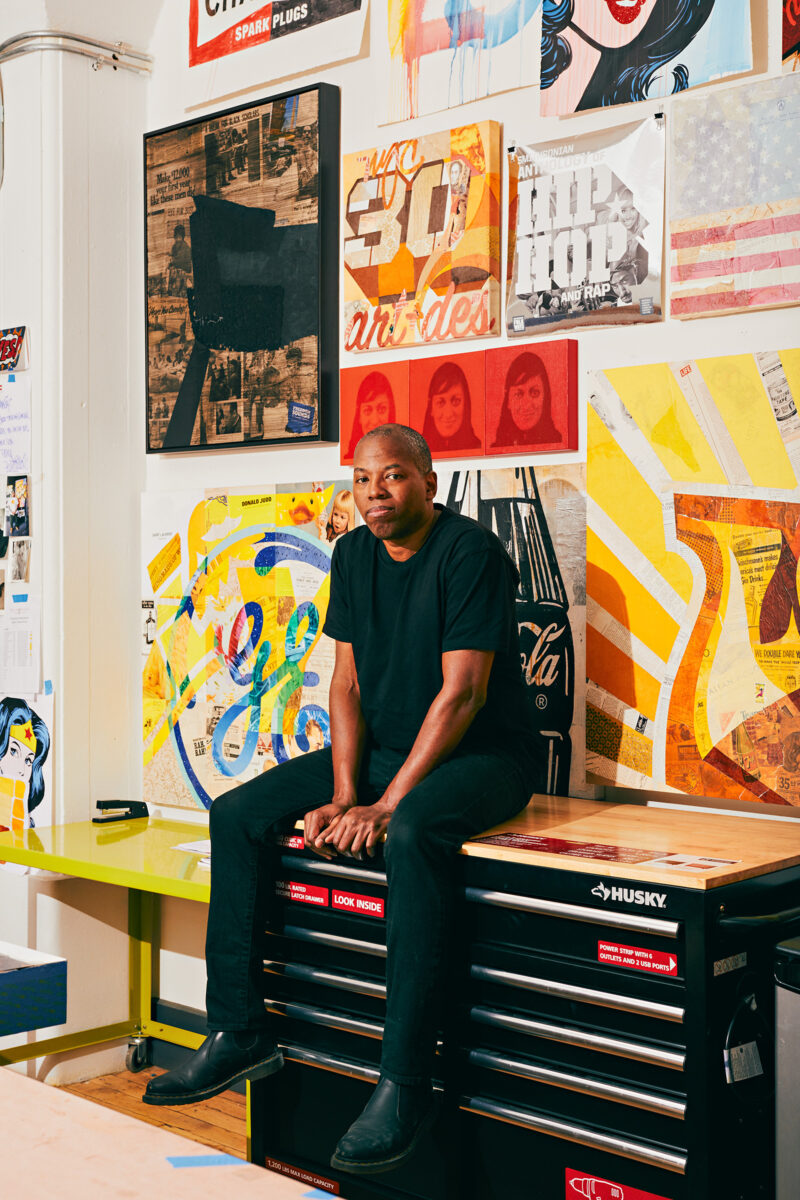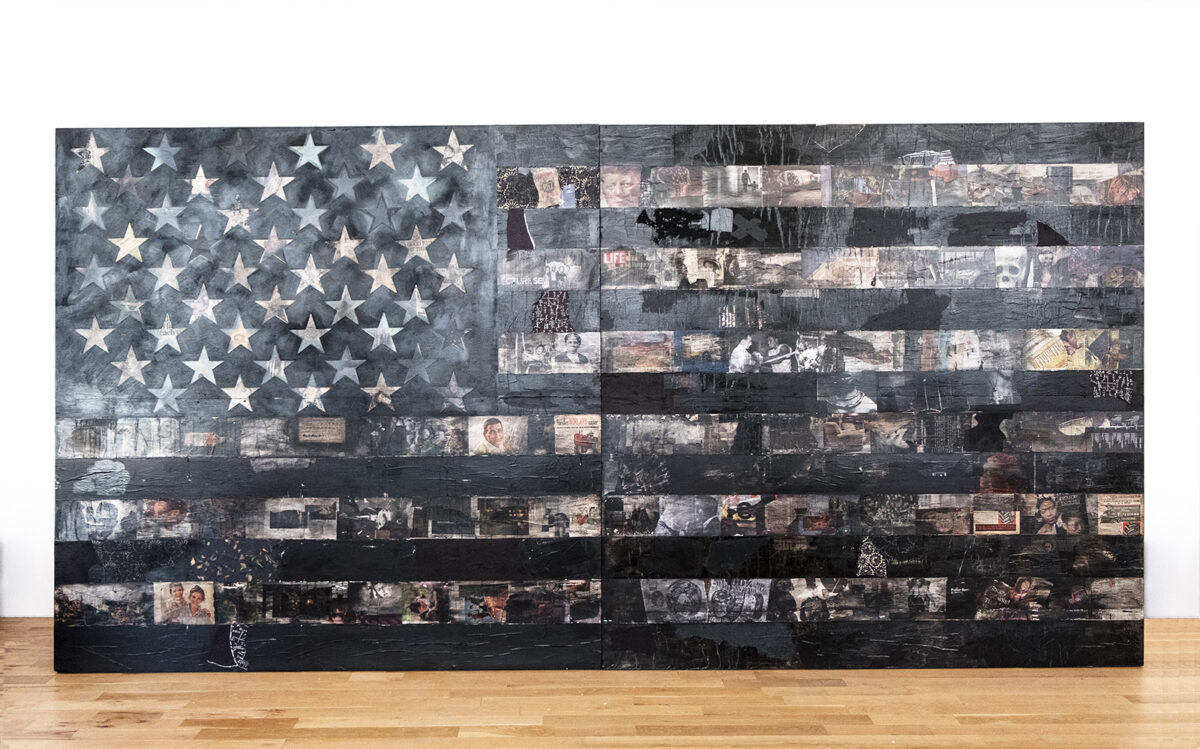Returning to Montana, Cey Adams Reflects on Art, Music and Life
The artist, who once worked as the creative director for Def Jam Recordings, will be speaking at the Wachholz Center at Flathead Valley Community College on March 7, at 7:30 p.m.
By Mike Kordenbrock
For Cey Adams, his return to Montana this week brings back memories from what feels like a lifetime ago.
Now in his early 60s, the New York City native and artist who was once the creative director for Def Jam Recordings, said that he hasn’t been back to the state since he joined his friends the Beastie Boys as they kicked off their License to Ill Tour in Missoula in 1987.
Then in his 20s, Adams said it was the first time in his life he’d ventured outside of New York. The show in Missoula was followed by others stretching across the United States, before the hip-hop group continued on to Europe.
“It was mind blowing,” Adams said, of the experience of seeing the broader world. “I got an opportunity to see the whole world with my friends. What’s better than that?”
At Def Jam, Adams was one of the founders of the label’s visual design firm called Drawing Board, and he created the visuals, album covers, logos and ad campaigns for artists and groups including Run DMC, Beastie Boys, LL Cool J, Public Enemy, Notorious B.I.G, Maroon 5, and Jay-Z. Over the years he has also done design work for Dave Chapelle’s “The Chapelle Show,” Nike, Coca-Cola, and other brands and artists.
Adams’ return to Montana this week was brought about by his involvement in the Wachholz College Center Speaker Series at Flathead Valley Community College, where on Tuesday, March 7, he’ll discuss his life, work, and art.

Prior to his start with Def Jam, Adams was once a part of New York City’s downtown graffiti art movement in the 1970s and 1980s, when his work was exhibited alongside iconic artists including Keith Haring and Jean-Michel Basquiat. Over the years he has been commissioned to create work for the Smithsonian National Museum of African American History and Culture, and his work, lectures, and workshops have been hosted at other institutions including the Museum of Modern Art, Stanford University, and Howard University, and Adams has co-authored or designed multiple books related to art, design and hip-hop.
His most recent ongoing project, called “Trusted Brands,” revolves around collage paintings that depict familiar emblems, logos, and brand iconography on a large scale. But that larger image is constructed of gridded arrangements of selected newspaper clippings, magazine pages, old documents and other ephemera that Adams selects to create deeply textured works of art that create conversations within conversations about the things we trust and recognize. While Adams is conscious of the effect his work tends to have on people, he said that the inclusion of so much text and detail within the work has allowed some viewers to interact with his pieces in ways he may not have anticipated.
“Some people it’s a discovery right from the start. For others it goes over their head. And for others it hits a nerve, sometimes proud, sometimes painful. And there’s some people that just love it, for whatever reason,” Adams said. “And I try to first make myself happy and hopefully other people come after the fact. But the most important thing is you draw your own conclusions. Don’t let me tell you what to think. If you have an idea about something in the work that you see, great. I’m not telling you what you see is not the intended purpose. It just depends on how deep you want to look.”
Adams’ reluctance to dictate how people should understand his work comes in the face of what he sees as increased pressure for artists to tell people how they should feel about their art.
“I think everybody’s much more sensitive than they used to be, No. 1. No. 2, I think that people look to artists to do the heavy lifting that in some cases used to be reserved for religion, politics, things like that. It’s a responsibility, but you don’t have to own it unless you choose to,” Adams said.
His selection process for the materials that make up his collages is driven by his own attraction to the 1950s and 1960s. Those eras feed his creative impulses in part by bringing him back to the world as it existed in his childhood, and just before. Adams described how interacting with pieces of media from those time periods is an opportunity for both nostalgic feelings, and the discovery of things he may have only heard about, but in his youth had never really understood.

That relationship with the past is in some ways reflective of Adams’ own interaction with music.
This year is the 50th anniversary of hip-hop, and Adams said that people often expect him to know everything about the musical genre, including the work of its newer generations of stars. While he says he has some familiarity with contemporary hip-hop and the work of its luminaries, like Kendrick Lamar, Adams says that he tends to stick with the music that he was around to experience during earlier periods in his life. While he acknowledges the skill and ability of newer artists, he can’t always find a connection with contemporary music because he feels it sometimes intends to speak to a younger audience, which he isn’t a part of. The role artists like Kendrick Lamar and Drake may inhabit for a younger generation, is something that Adams said he already has with artists who rose to prominence earlier in hip-hop history, like Rakim. His musical tastes also aren’t limited to hip-hop, and encompass musical acts as disparate as Frank Sinatra and Nirvana.
As an artist, Adams said that he remains grateful for the opportunities he has had in his life, and his ability to continue to produce work that people enjoy. Still, the longevity of his career and the passage of time have brought about other emotions, too.
“It’s also sad. You know, my friend Dave (Jolicoeur) from De La Soul just passed away. Biz Markie just passed away. Adam Yauch passed away,” Adams said. “I’m a representative of a very particular community and I think that to me, I feel like an ambassador of the culture. So, when I come to town that’s what I’m going to be reminding these young people about. Whatever their dreams are, dig in right now, because this is it. There is no tomorrow. Every thing is right now.”
With the pursuit of an artistic life also comes the risk of failure, but Adams said it’s preferable to the alternative.
“What’s even harder is not having a dream, not knowing who you are. That’s even harder. Because there’s nothing to look forward to. If every morning you wake up you don’t know who you are, and you don’t know what makes you happy, that’s worse. Because there’s nothing to look forward to. Every time I open my eyes I can’t wait to get to the studio so I can start making stuff. I know what I’m gonna do the second I open my eyes. And that’s a big deal. A lot of people never find their joy.”